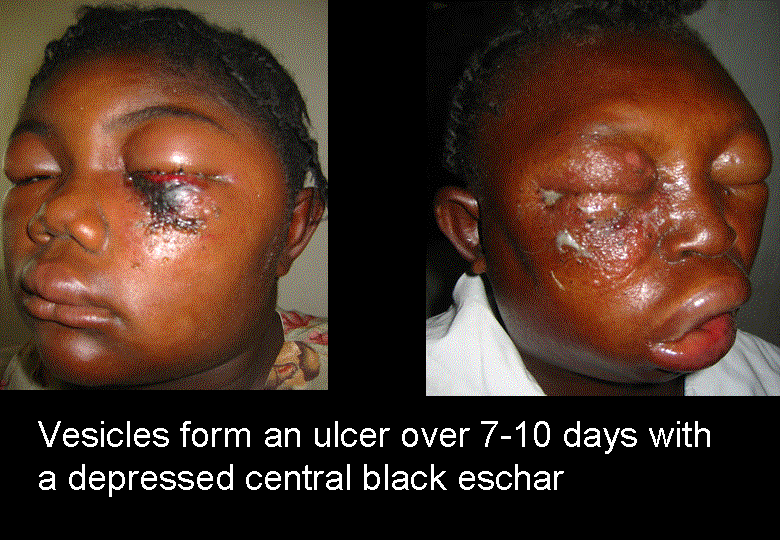Thursday, March 23, 2006
9716
Facial Cutaneous Anthrax: Prompt Recognition IS Pertinent With The Emerging Threat Of Bioterrorism
Accurate diagnosis of cutaneous anthrax, appropriate management and prompt disease surveillance depends on clinicians been familiar with the characteristic appearance of typical skin lesions. This has become more imperative with the emerging threat of bioterrorism worldwide. Plastic surgeons may well be initially consulted if a patient develops a cutaneous anthrax lesion in a non-endemic country.
Anthrax is primarily a zoonotic disease (e.g. cattle, goats and sheep). However cutaneous anthrax is seen in patients who are exposed to contaminated meat or animal products in endemic countries such as Haiti. If affected patients receive prompt antibiotic therapy, their mortality rate is significantly reduced (25% to <1%). Inhalational and gastrointestinal anthrax resulting from respiratory exposure or ingestion of anthrax spores respectively are less common (10% of naturally-acquired anthrax) and have a worse prognosis even with appropriate therapy.
We studied the epidemiology of naturally acquired anthrax in the Artibonite valley in Haiti, where anthrax is endemic in order to identify the risk factors and mode of patient exposure. The natural history of facial cutaneous anthrax lesions was elucidate from observing the clinical course of patients presenting to Hospital Albert Schweitzer which serves the entire region.

